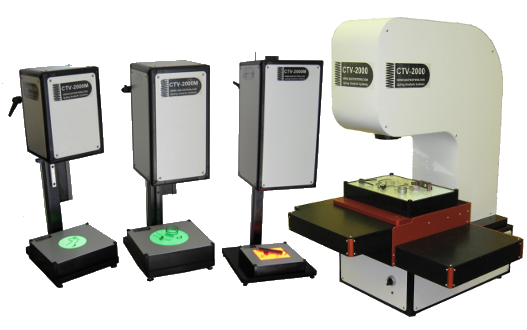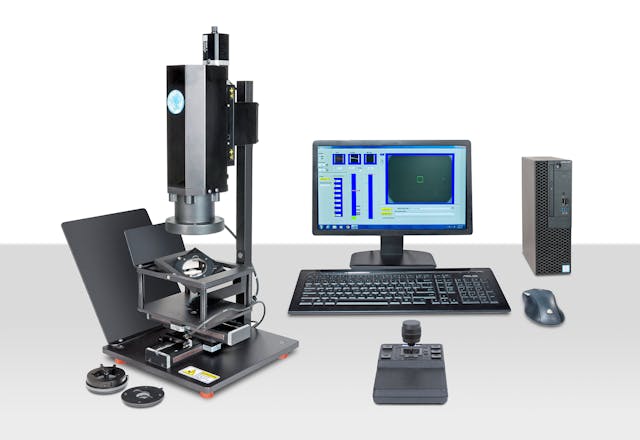How optical measurement systems minimize waste and rework in lean manufacturing
The Role of Optical Measurement Solutions in Progressing Metrology Methods
Optical dimension systems have transformed metrology, bringing a level of precision that was once unimaginable. You could be shocked to learn exactly how these innovations, based on fundamental principles like representation and interference, are used across various sectors. Their non-contact capacities not just enhance accuracy but additionally streamline procedures. As you discover even more, you'll discover how these systems are forming the future of measurement and top quality control.
The Development of Width: A Historical Point Of View
As you check out the background of width, you'll discover that its development shows humanity's pursuit for accuracy and standardization. From old human beings using body parts as systems of dimension to the development of standard weights and steps, each step shows our wish for accuracy. The Egyptians built the pyramids using specific measurements, while the Romans advanced design with their innovative measuring devices.
Throughout the Renaissance, clinical breakthroughs shifted the focus towards extra empirical methods, leading the way for modern metrology. The introduction of the statistics system in the late 18th century noted a considerable turning point, establishing universal requirements. Throughout the 20th century, technical developments further transformed metrology, allowing very accurate dimensions in various areas.
Today, assessment remains to advance, incorporating digital technology and automation. This history highlights not just the value of dimension yet also our ruthless pursuit of enhancing precision and consistency in our increasingly complex world.
Principles of Optical Dimension Equipments
Understanding the principles behind optical dimension systems is necessary for exact cause metrology. You'll intend to take into consideration essential optical principles, measurement precision elements, and effective system calibration techniques. Each of these components plays an important function in guaranteeing your measurements are accurate and reliable.
Fundamental Optical Principles
While discovering optical dimension systems, you'll experience basic optical principles that create the foundation of accurate data procurement. Light acts in foreseeable ways, and understanding these actions-- like reflection, refraction, and diffraction-- is crucial for reliable dimensions. You'll make use of lenses and mirrors to adjust light and concentrate it onto your target, ensuring accuracy in your readings. Furthermore, the wave nature of light allows for interference patterns, which can enhance dimension resolution. Polarization can likewise play a key duty in distinct signal from sound, enhancing the clearness of your outcomes. By grasping these principles, you'll be equipped to utilize optical innovations efficiently, leading the method for developments in assessment and guaranteeing your measurements are both trusted and repeatable.
Measurement Accuracy Aspects
To attain high measurement accuracy in optical systems, numerous variables enter into play, influencing the integrity of your results. Initially, the high quality of the optical components matters significantly. High-quality lenses and detectors minimize aberrations and sound, ensuring your dimensions are exact. Second, environmental problems like temperature and humidity can impact dimensions, so preserving a steady setting is necessary. Third, the alignment of the optical system is crucial; also small imbalances can cause considerable errors. The wavelength of light used influences the resolution and precision of your measurements. By attending to these aspects, you can boost the general performance of your optical measurement systems, leading to more accurate and dependable lead to your metrology applications.
System Calibration Methods
Accomplishing high dimension accuracy is only part of the formula; proper system calibration techniques are equally important in optical dimension systems. Next off, employ known dimensions to validate the system's output and make needed modifications. With these strategies, you'll boost the dependability of your optical measurement system.
Secret Technologies Behind Optical Measurement
Optical dimension systems depend on a number of vital modern technologies that enhance precision and performance in metrology. One important technology is interferometry, which makes use of the interference of light waves to measure tiny displacements and surface area abnormalities with severe accuracy. You'll likewise find laser scanning systems, which capture comprehensive 3D information of items quickly, making them indispensable for dimensional analysis.
Furthermore, CCD and CMOS sensing units play a substantial role in transforming light into electric signals, enabling for high-resolution imaging and accurate dimensions. Advanced formulas for photo handling better enhance measurement precision by evaluating information in genuine time, removing sound and improving features.
Lastly, optical fiber provide versatility and the capacity to determine in tough atmospheres while maintaining signal honesty. By leveraging these modern technologies, you can attain superior lead to your width jobs, making sure that your measurements are both accurate and reputable.
Applications of Optical Measurement in Sector
As markets significantly demand precision and efficiency, the applications of optical measurement systems have become crucial across numerous discover this fields. In manufacturing, these systems assist you keep track of measurements and tolerances in real-time, ensuring quality assurance without lengthy hands-on checks. In the automobile market, optical measurements help in lining up elements with accuracy, boosting safety and efficiency.
In electronics, you're using optical approaches to examine min features on circuit card, identifying issues that can cause failings. The aerospace field benefits from non-destructive testing techniques, allowing you to analyze materials and parts without endangering their integrity.
Optical measurement additionally plays an important duty in fabrics, making sure material dimensions satisfy precise requirements. optical measurement systems. With their ability to provide high-resolution information quickly, these systems empower you to make enlightened decisions, enhance procedures, and eventually drive innovation throughout your industry
Enhancing Accuracy and Performance in Dimensions
When you think of enhancing accuracy in dimensions, precision in your measurement methods is necessary. By streamlining these procedures, you can achieve quicker outcomes without giving up top quality. Allow's discover just how adopting sophisticated optical dimension systems can boost both precision and effectiveness in your job.
Accuracy in Dimension Strategies
Accuracy in measurement techniques is important for attaining reliable lead to metrology, specifically because tiny inconsistencies can cause substantial errors. By utilizing sophisticated optical measurement systems, you can boost the precision of your dimensions. These systems offer high-resolution information that assist you detect also the tiniest variations in dimensions. When you adopt these technologies, you lessen uncertainties and enhance repeatability in your processes. On top of that, accurate dimensions enable you to preserve quality assurance, guaranteeing that items satisfy strict requirements. This not only increases your trustworthiness but likewise enhances client complete satisfaction. Buying precision measurement devices ultimately brings about enhanced performance, lowered waste, and enhanced production cycles. Accepting these methods will certainly change your technique to metrology, producing exceptional outcomes.
Improving Measurement Procedures
To boost precision and performance image source in measurements, improving your measurement procedures is essential. Beginning by taking on optical dimension systems that give real-time information, reducing the time invested on hand-operated recording. These systems often integrate effortlessly with existing software, allowing you to automate data collection and analysis.
Following, systematize your measurement methods. By implementing consistent procedures, you reduce variability and improve repeatability. Do not fail to remember to frequently adjust your equipment to assure its precision.

The Impact of Optical Dimension on R & D
As researchers endeavor to press the boundaries of advancement, optical dimension systems have actually come to be vital devices in the development process. These systems offer you with accurate, real-time information that boosts your ability to evaluate intricate materials and structures. In different areas, from biotechnology to aerospace, you depend on optical measurements to improve and optimize layouts product performance.

With high-resolution imaging and non-contact techniques, you can decrease sample disruption, permitting even more precise outcomes. This capacity to catch minute information accelerates your R&D cycle, letting you iterate designs rapidly and efficiently. In addition, optical dimension fosters collaboration throughout self-controls, as the information created is usually conveniently interpretable and shareable.
Ultimately, incorporating optical measurement systems right into your research not just improves efficiency yet additionally strengthens your understanding of the phenomena you research. By leveraging these advanced methods, you're better equipped to introduce and stay in advance in an affordable landscape.
Future Patterns in Optical Measurement Equipments
With the fast improvement of innovation, you're likely to see considerable changes in optical dimension systems that will certainly redefine their application throughout different sectors. You'll observe a step towards enhanced automation and integration of synthetic intelligence, enabling real-time data evaluation and enhanced precision. Miniaturization is one more trend; small tools will certainly enable dimensions in tighter spaces, making them ideal for fields like aerospace and biomedical applications.
Anticipate to see systems that can run in challenging atmospheres, offering reputable dimensions in severe problems. As these technologies converge, you'll useful link discover that optical dimension systems not just boost accuracy but likewise enhance operations, inevitably driving advancement and efficiency in your jobs.
Often Asked Concerns
Exactly How Do Optical Dimension Solutions Contrast to Typical Dimension Techniques?
Optical measurement systems supply greater accuracy and faster results compared to typical strategies. You'll locate they capture more information factors accurately, minimizing human mistake and raising integrity, making them a recommended selection in numerous applications.
What Industries Benefit Most From Optical Dimension Equipments?
You'll locate sectors like aerospace, automotive, and electronics benefit most from optical dimension systems. These markets rely upon exact measurements to guarantee top quality and performance, improving performance and decreasing prices with sophisticated modern technology.

Are Optical Measurement Systems Expensive to Apply?
Optical measurement systems can be pricey to carry out, but their accuracy and efficiency often warrant the cost. Buying such technology can cause substantial lasting savings and enhancements in high quality across numerous applications.
What Skills Are Needed to Run Optical Measurement Solutions?
To operate optical dimension systems, you'll need solid analytical abilities, attention to detail, and effectiveness in software program devices. Familiarity with optics and an understanding of measurement concepts will certainly additionally improve your performance and efficiency.
Exactly How Do Ecological Aspects Affect Optical Measurements?
Ecological variables like moisture, temperature level, and air top quality can distort optical measurements. You'll observe variants in accuracy as a result of light interference or refraction. optical measurement systems. Preserving steady problems is necessary for trusted and precise optical dimension outcomes
Final thought
In summary, optical dimension systems are changing width by offering unequaled precision and performance. By utilizing advanced concepts and innovations, these systems improve accuracy while minimizing interruptions in numerous sectors. As you check out future trends, you'll see just how the assimilation of AI and automation will certainly proceed to raise dimension techniques, driving innovation and boosting quality assurance. Accepting these improvements will certainly be necessary for staying competitive and achieving excellence in your field.
Achieving high dimension precision is only component of the equation; correct system calibration strategies are similarly important in optical dimension systems.When you believe about enhancing accuracy in dimensions, precision in your dimension techniques is essential. By making use of sophisticated optical measurement systems, you can improve the accuracy of your dimensions.To improve accuracy and effectiveness in measurements, enhancing your dimension processes is essential. Exactly How Do Optical Dimension Systems Compare to Standard Measurement Techniques?